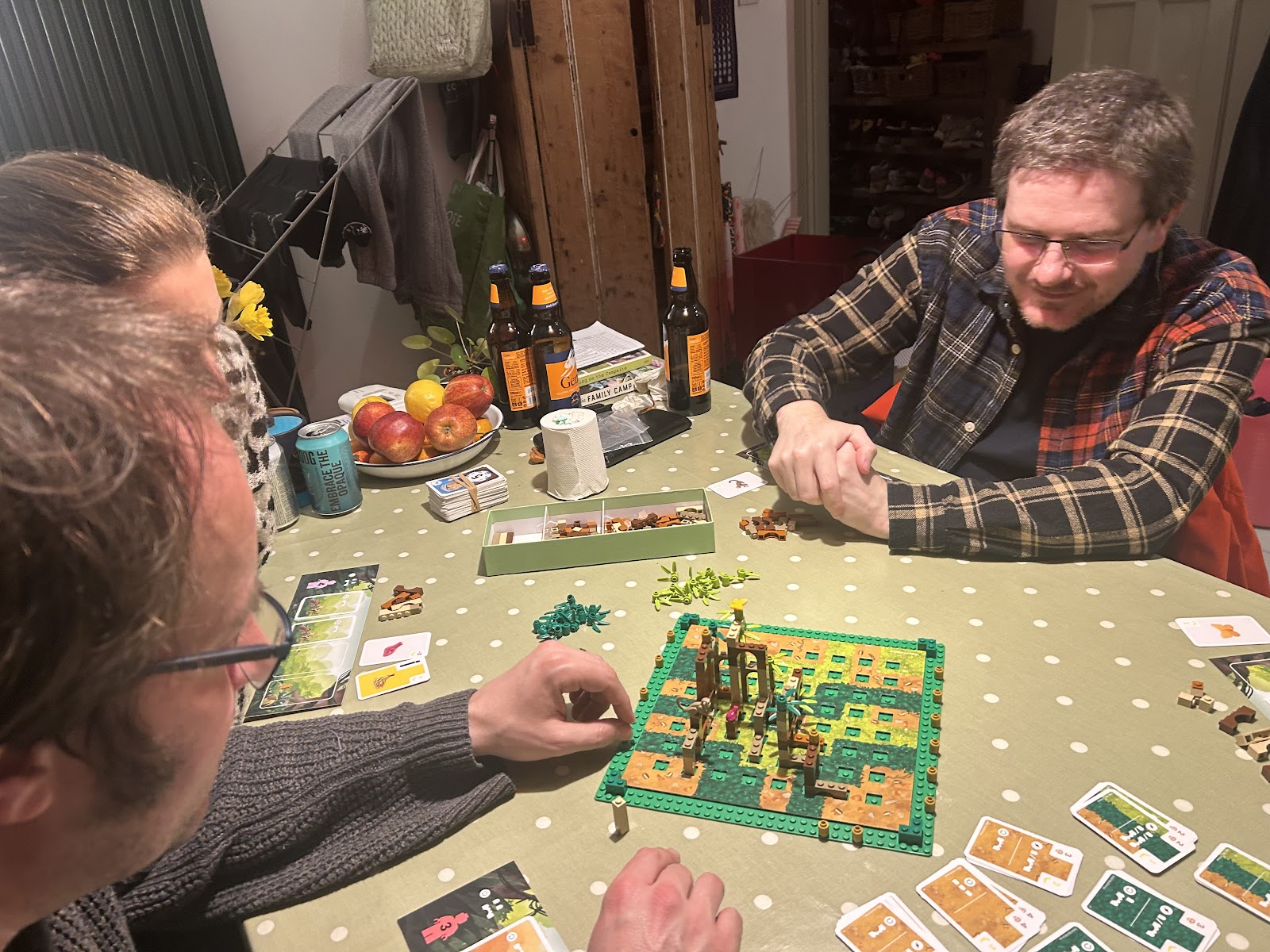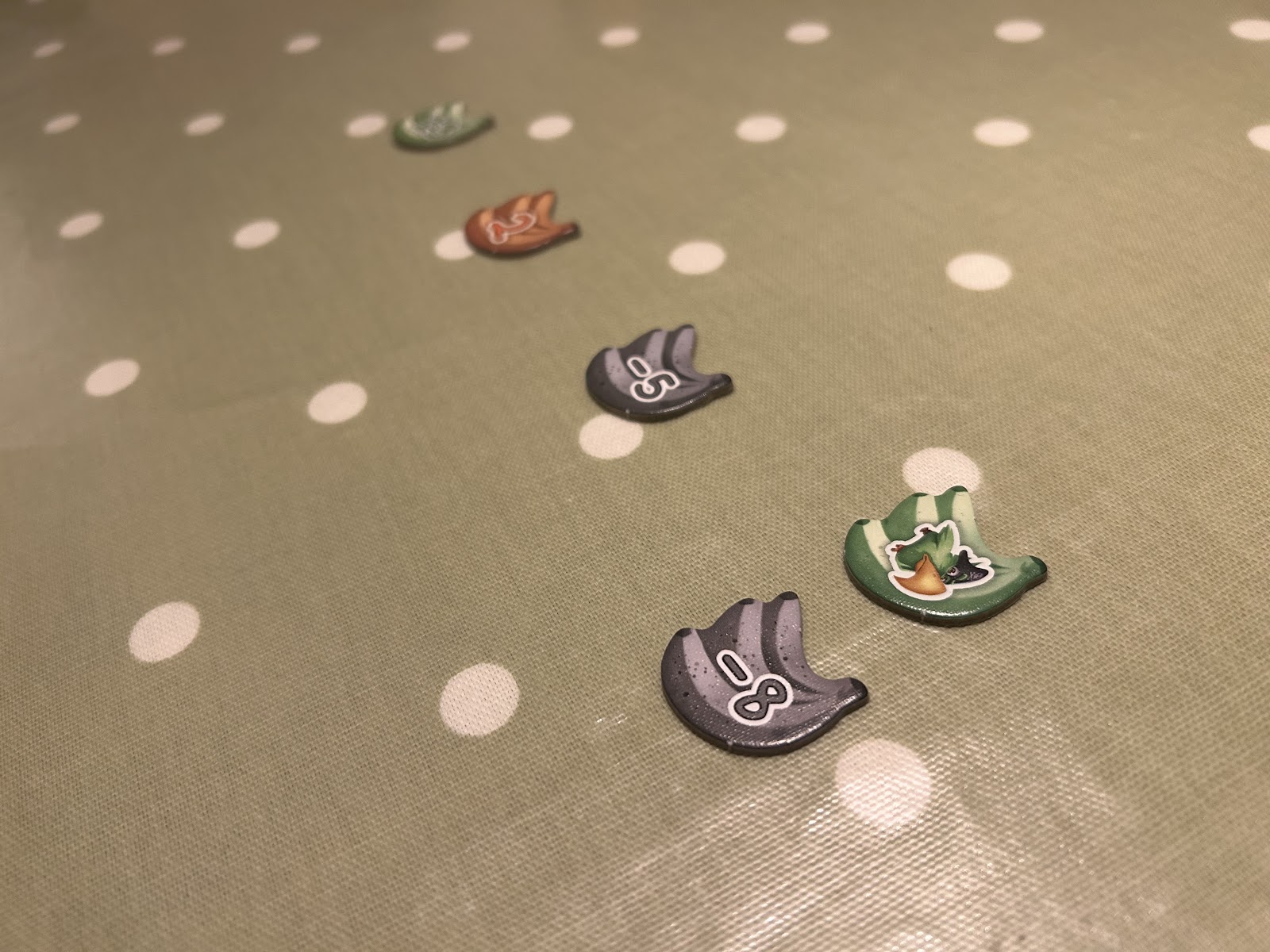A relatively sparse GNN kicked off when Martin and Ian arrived at my house. While we waited for our fourth member to join us we played Rainbow, a card game that sort of flips Fishing on its head. The cards are numbered 1-6 and you're playing singles or sets to claim cards from the middle of the table as points - but the catch is that whatever you bid will become the points for the next round.
It's a clever game, but not entirely devoid of luck - dealt a bunch of fives and sixes, I won the first play fairly easily.
Martin 35
Ian 26
But it only takes ten minutes, so we went again. This time things everyone upped their game a little, which the scores reflect:
Sam 46
Ian 42
Laura had arrived at the finale, and so what was to become the unofficial Monkey Night kicked off: three games with simian flavour, although that's where the similarities ended. We began with one of Martin's: Ape Town, a Knizia tile-layer where we're a kind of monkey mafia, trying to get the most points from a combination of momentary opportunities and longer-term area control.
The track around the edge of the board shows what tiles are available to you: you can take the next one available, or pay money to hop past it to the next one, and so on. Monkeys and Bananas simply score via adjacency. Orangutans and Lemurs score when the neighbourhood they are in is complete: Orangutans for the monkeys in that neighbourhood, Lemurs for the monkeys in adjacent neighbourhoods - as long as they outnumber the Lemurs in it.
I think we all began with the anticipation that perhaps Orangutans were where the juice was, as they effectively boss the neighbourhoods. But as play continued it transpired that the Lemurs could, at the right moments, haul in huge points. Ian and I sailed off ahead of Laura and Martin, and they didn't catch us. Martin's enforced investment in the empty areas didn't work out, as they filled up with worthless bananas.
Ian 77
Laura 70
Martin 66
This is a Lego-based task of building aforementioned palace in order to generate monkey points and cash them in for cards, which represent both end-game points and Lego income for the future. Every turn you must build from the ground up, and the amount of monkey points depends on how many arches you build (1mp per arch) and whether the decoration you place on top is the highest of its' type (+1mp). It's simple mechanically, but quite challenging spatially, especially when the structure grows a size befitting of its name.
Four bananas (bunches, to be precise) are drawn randomly from a bag, and then we bid on them with these cards, and keep going until everyone is bidding on a separate banana bunch. Then we put whatever we got onto our boards:
As you can see, space is limited (the round ends when the boards are full) so having too many green bananas early on restricts your involvement in subsequent rounds. But on the other hand, they do tend to be high-scoring. Inevitably, as this is Knizia, there are also rotten bananas and parrots that eat bananas, and someone has to take that shit.
Your bid cards are gone for good - except for the zero, which always comes back to you. Any cards you still have after round three are worth points! Ian and I held onto our tens, but it was Martin who came away the victor, by a banana-peel margin.
"Let's go again" I said, even though we all knew that the second play of So Clover always leads to catastrophe. I said we needed to break the curse, so we summoned what wherewithal we had left after an evening of simian shenanigans. It was another triumph, and the curse was broken.
All that remained was the downing of whiskies, the shucking of coats and grabbing of things. This was slightly held up by Charlie, who was so reluctant to get off Martin's bag that he travelled halfway across the kitchen floor. "He's not one for hints" I admitted.













On perusing BGG, it seems that to get the 'five height' bonus in Monkey Palace, they have to all be in a row, not broken up by arches.
ReplyDelete